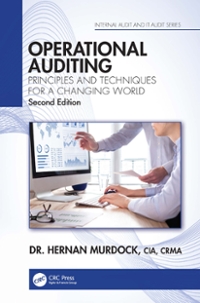Question
Presented below are condensed financial statements adapted from those of two actual companies competing in the pharmaceutical industryJohnson and Johnson (J&J) and Pfizer, Inc. ($
Presented below are condensed financial statements adapted from those of two actual companies competing in the pharmaceutical industryJohnson and Johnson (J&J) and Pfizer, Inc. ($ in millions, except per share amounts).
| Balance Sheets ($ in millions, except per share data) | |||||||
| J&J | Pfizer | ||||||
| Assets: | |||||||
| Cash | $ | 13,369 | $ | 8,219 | |||
| Short-term investments | 5,529 | 11,785 | |||||
| Accounts receivable (net) | 8,169 | 10,370 | |||||
| Inventories | 5,064 | 8,413 | |||||
| Other current assets | 5,015 | 4,880 | |||||
| Current assets | 37,146 | 43,667 | |||||
| Property, plant, and equipment (net) | 13,762 | 22,203 | |||||
| Intangibles and other assets | 18,238 | 71,563 | |||||
| Total assets | $ | 69,146 | $ | 137,433 | |||
| Liabilities and Shareholders' Equity: | |||||||
| Accounts payable | $ | 6,451 | $ | 4,086 | |||
| Short-term notes | 3,680 | 11,359 | |||||
| Other current liabilities | 8,718 | 13,613 | |||||
| Current liabilities | 18,849 | 29,058 | |||||
| Long-term debt | 4,330 | 7,130 | |||||
| Other long-term liabilities | 6,344 | 23,339 | |||||
| Total liabilities | 29,523 | 59,527 | |||||
| Capital stock (par and additional paid-in capital) | 4,770 | 68,700 | |||||
| Retained earnings | 43,158 | 41,537 | |||||
| Accumulated other comprehensive income (loss) | (810 | ) | 250 | ||||
| Less: Treasury stock and other equity adjustments | (7,495 | ) | (32,581 | ) | |||
| Total shareholders' equity | 39,623 | 77,906 | |||||
| Total liabilities and shareholders' equity | $ | 69,146 | $ | 137,433 | |||
| Income Statements | |||||||
| Net sales | $ | 47,747 | $ | 51,073 | |||
| Cost of goods sold | 13,562 | 11,218 | |||||
| Gross profit | 34,185 | 39,855 | |||||
| Operating expenses | 21,105 | 29,828 | |||||
| Other (income) expensenet | (550 | ) | 3,775 | ||||
| Income before taxes | 13,630 | 6,252 | |||||
| Tax expense | 4,089 | 1,876 | |||||
| Net income | $ | 9,541 | $ | 4,376 | * | ||
| Basic net income per share | $ | 2.97 | $ | 0.77 | |||
* This is before income from discontinued operations. Evaluate and compare the two companies by responding to the following questions. Note: Because two-year comparative statements are not provided, you should use year-end balances in place of average balances as appropriate. Required: 1. For both companies, compute the ratios below. 2. Evaluate and compare the two companies.


Complete this question by entering your answers in the tabs below. Required 1: Required 2 For both companies, compute the ratios below. Pfizer times times days days times times days days Receivables Turnover (#.##) Average Collection Period (#) Inventory Turnover (###) Average Days in Inventory (#) Profit Margin (#.##)% Asset Turnover (#.### Return on Assets (# #% Equity Multiplier (8) Return on Shareholders' Equity (# =)% times Required 2 > Complete this question by entering your answers in the tabs below. Required 1 Required 2 Evaluate and compare the two companies. Analysis Which of the two companies appears more efficient in collecting its accounts receivable and managing its inventory? Which of the two firms had greater earnings relative to resources available? Have the two companies achieved their respective rates of return on assets with similar combinations of profit margin and turnover? From the perspective of a common shareholder, which of the two firms provided a greater rate of retur? From the perspective of a common shareholder which of the two firms appears to be using leverage more effectively to provide a return to shareholders above the rate of return or assets?
Step by Step Solution
There are 3 Steps involved in it
Step: 1

Get Instant Access to Expert-Tailored Solutions
See step-by-step solutions with expert insights and AI powered tools for academic success
Step: 2

Step: 3

Ace Your Homework with AI
Get the answers you need in no time with our AI-driven, step-by-step assistance
Get Started


